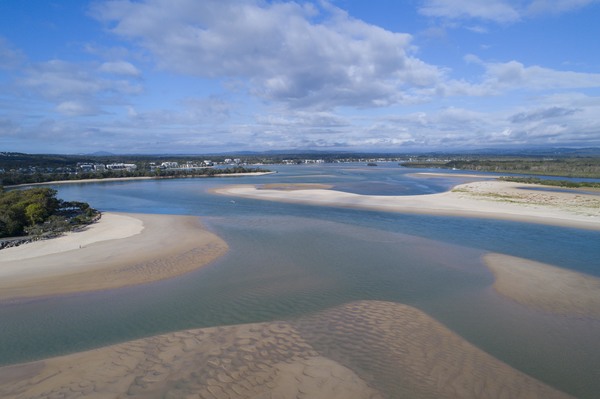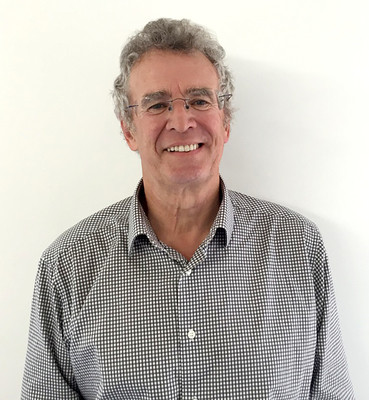As the Noosa Biosphere Reserve Foundation releases its latest reports to Council we ask Chair Dick Barnes for answers to questions on NBRF often raised in the community
1. Who was on the committee that selected the grant recipients?
An independent sub-committee of the Board managed the grants program. The Chair of the committee is Clare Cartwright, a Noosa local all her life and prominent young lawyer, Karen Hussey, a Professor at the University of Queensland and Dr David Dique, an expert in koala conservation and advising business on achieving a balance between development and conservation. Finally, Councillor Frank Wilkie provides the sub-committee with extensive experience of the broader Noosa community’s aspirations for balanced socio-economic development. This committee is still in place and managing the ongoing program. A contractor, Nick Heath and our administrator supported the process but took no part in the decision making.
2. What was the criteria?
The overarching purpose of this grants round is prosperity from protection, with a focus on “Big Ideas” in four priority areas. The criteria were well published on our website when the program was launched. We have asked that all projects address to some extent the fundamental aims of a Biosphere Reserve by addressing both environmental and socio-economic issues.
3. Was the selection of the committee final? Absolutely – the sub-committee’s decisions were final.
4. What did NBRF do to ensure there were no conflicts of interest in making the selection? We have a significant number of Directors well trained in governance so this was an aspect we paid a lot of attention to. We carefully examined each Board members’ affiliations for independence from organisations that may submit grant applications. Given Dick Barnes and Michael Gloster had links to organisations that wished to apply, they both stepped aside. The response to our grants round was incredible with 54 applicants roughly equally split between large and small grants.
5. Can you explain NBRF’s finances?
We have received about 14 per cent of the Environment Levy. Our allocation roughly equates to $250,000 annually over the past three years. There has also been a one-off grant of $80,000 for socio-economic projects. Of this money, about half has been spent, a quarter committed to projects which will be spent when they meet milestones and a quarter to be spent on this year’s record grant round. We also receive operational funds which have averaged $110,000 per annum. These funds originally provided for an executive officer, but we have now moved to a different model of securing specialist contractors on a part time basis, to assist the volunteer directors to run the organisation. We will spend a little more this year, $140,000 to cover a peak in requirements as we handle the required 10-year review by UNESCO. We are required to report yearly results and the half yearly position to Council. The annual report for 2016/17 and the half yearly report for 2017/18 are in front of Council at present. They will be placed on our website (www.noosabiosphere.org.au) once approved. (Note: The accounting standards for Charitable and Not for Profit organizations requires that grants are only reported as income when paid out). We have managed to get a 2 to 1 leverage from cash contributions and “in kind” support on top of the grants we award. The structure of NBRF with Donor Gift Recipient (DGR) status, allows effective leverage, was in its original design and is being achieved. We are working hard to source other revenue.
6. How were NBRF’s projects: Bring Back the Fish, Keep it in Kin Kin, Koala Mapping selected?
They were approved and funded in the first grants round in 2015. A great deal of effort was put in to make sure they had a sound scientific underpinning. Various articles have been submitted by us on these flagship projects and progress is covered in our reports on our website. We plan further community communication on these as they are ground breaking and exciting.
7. The NBRF has been described as a closed shop? Is it aiming to change this perception of it? Let the sun shine in, we say. We have a diverse mix of skills on the board, and across our contractors. Frank Wilkie is a thespian, Clare Cartwright is a lawyer and mountain biker. David Dique loves the surf and koalas. Karen Hussey has studied communities like Noosa across the world, and how they can engage decision-makers to the community’s benefit. Michael Gloster has resisted unreasonable development in his view and has given so much to help make Noosa what it is today. I’m passionate about the hinterland, am engaged in multiple community organisations and in helping our rural enterprises achieve greater viability. We all love Noosa, and only want the best future for it. In coming months, we will be advertising publicly for more directors and we hope to see a greater diversity of expertise drawn in to help Noosa become even more special. NBRF also operates in co-operation with the Noosa Community Biosphere Association which is a membership organisation that has always been very active in the community as the engagement side of the biosphere structure that Council set up at de-amalgamation. We encourage the community to join NCBA, have their say and play their part in making our Biosphere Reserve a valued part of their own Noosa way of life.
8. Is NBRF considering consulting the community on what they want from NBRF? Yes, we are preparing to put options to the community in a few months time. In addition, each of our grants rounds have been driven by the community’s ‘big ideas’. The future direction of the NBRF will be in the centre of the community’s aspirations, what’s fundable and what works in practice. We recognise there is limited understanding of the Noosa Biosphere Reserve. NCBA produced a video for us explaining the biosphere reserve concept and its implementation in Noosa. So far about 25 workshops have been held with community groups and approximately 2500 residents have seen the video (which has been well received). Although progress, there is still a long way to go on education and engagement for the community at large.
9. How are you dealing with the community resentment of the Noosa Biosphere?
We recognise there are bad feelings on a number of fronts that starts from the very way the Noosa Biosphere was set up in 2007. There are conflicting views on the effectiveness or otherwise of the previous NBL and the sector boards that it worked with. Also there is no doubt that the transition to the current structure was aggressively implemented to the disappointment of many. I, as Chair, am new to the management of the NBRF. I and the majority of the NBRF Board have no roots in any of the previous organisations and just want to make what we have work. We have an independence from the past. As I often say, the community needs another organisation change like a hole in the head and I believe we are demonstrating that we can get the job done with the structure we have today. We are very happy to have the help and support of past biosphere members and there are many that support what we are doing. We aim to build on the best work of the past whenever we can. We would be happy to involve anyone who genuinely wants to make things work either with NBRF or NCBA and build on any work and expertise available.
10. Projects appear to have been very focused on the environment. Does NBRF think the focus reflects the aims of a Biosphere?
We aim to fund and encourage projects that align with principles under the UNESCO Man and Biosphere program – a wise balance between the environment and people. The orientation of projects is also determined by our funding deed with Council. Presently most of our funds come from the Environment Levy. That said, while projects must deliver for the environment to satisfy levy requirement, the Board is passionate in ensuring projects have socio-economic benefits. ‘Bring back the fish’, for example, aims to improve the water quality and bio-diversity of the Noosa River. At the same time we are aiming, long term, to make the river a food source again involving suitable commercial fishing and provide good recreational fishing to residents and visitors – the heart of our economy. ‘Keeping it in Kin Kin’ aims to stop erosion in the Kin Kin catchment sending sediment into the lakes and river with associated conservation benefits. However, we plan that this action will be part of improving agricultural productivity in the area and thereby contributing to prosperity.
11. What does it propose for its strategic direction? We are currently undertaking a strategy planning exercise. We have a lot of detail to develop. However, I think we are homing in on four themes which we need to flesh out. 1. Making “Sustainable living the norm” in our populations 2. Developing the health and productivity of our waterways 3. Conserving our iconic species that aid our tourist economy. 4. Developing the health and productivity of the Noosa Hinterland.
12. What does the Biosphere want to achieve in its next 10 years?
Again this is under discussion but my view would be as Chair: 1. Have a successful track record at investing wisely in and implementing big ideas that both conserve our environment and contribute to our socio-economic development. 2. Have the Noosa Biosphere concept well understood and supported by the community 3. Be seen as a very successful route to invest the Environmental Levy. 4. Successfully implement a fundraising scheme that we can leverage further.







